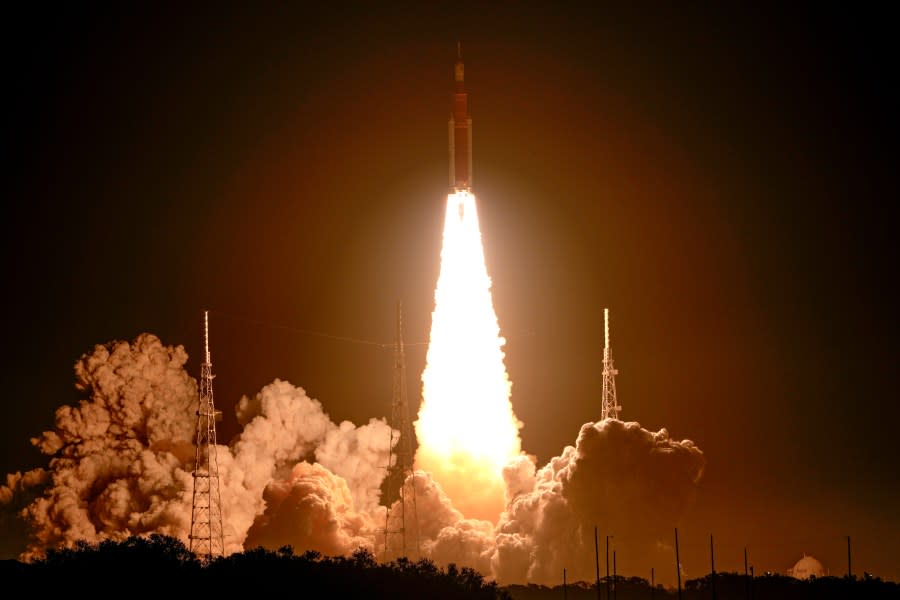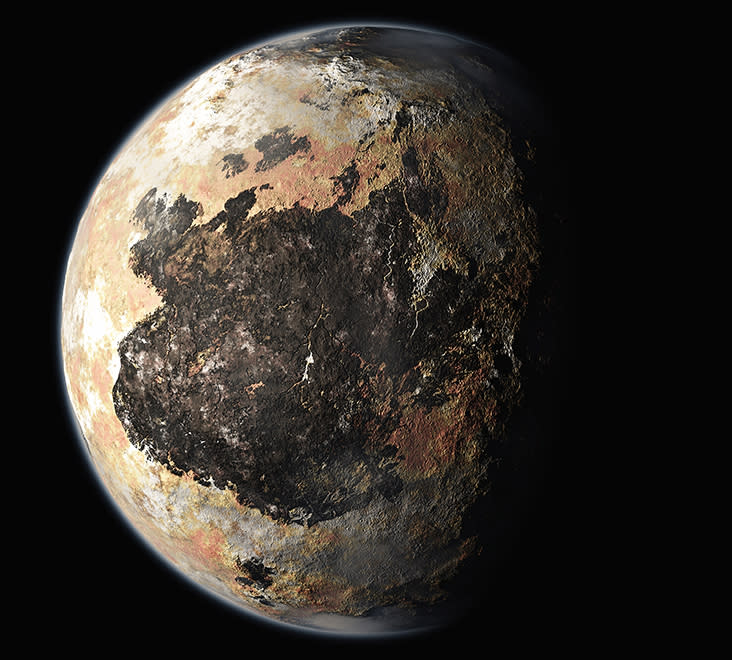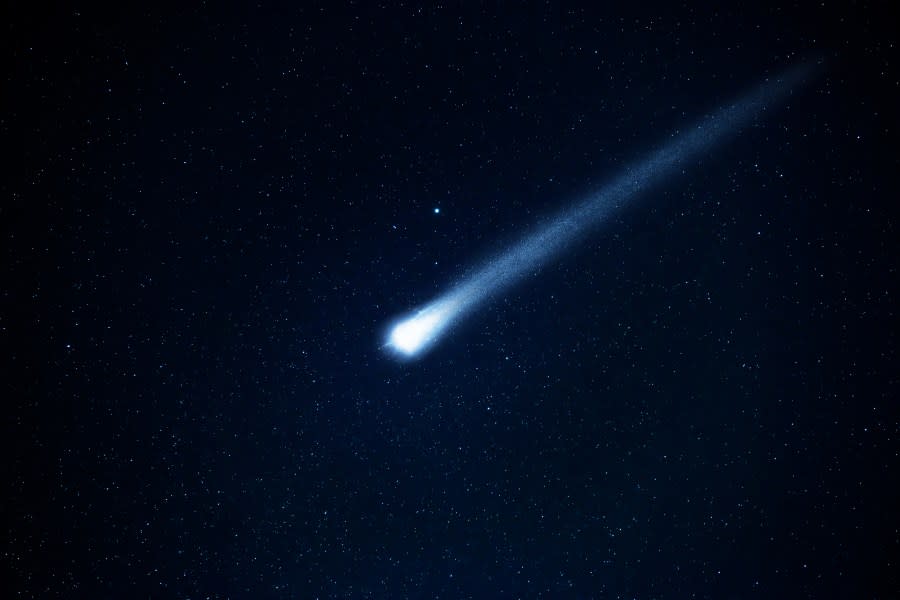Kansas ties to space you may not know about

TOPEKA (KSNT) – The challenge of exploring space is something every state in the U.S. is connected to, including the Sunflower State.
You might be surprised to learn that Kansas has several connections to space and the National Aeronautics and Space Administration (NASA). While the Sunflower State may not be home to one of NASA’s launch sites or more notable space race museums like the Kennedy Space Center in Florida, it does have several unique ties to the exploration of our solar system or to space in general that you might not know about.
Royals plans, renderings answer some questions and raise others
Ad Astra Per Aspera

One space connection that may come to mind is the Kansas state motto, “Ad Astra Per Aspera.” This phrase emerged shortly after Kansas was made into a state in 1861 for use on the Great Seal of Kansas by Senator John J. Ingalls of Atchison, according to the Kansas Historical Society. The Latin phrase translates to, “To the stars through difficulties.” It was eventually adopted and placed onto the seal during the first state legislative session on May 25, 1861.
Kansas’ state motto is also featured on an exhibit in NASA’s Kennedy Space Center, according to NASA. The motto appears as “Ad Astra Per Aspera – A Rough Road Leads to the Stars” on an exhibit dedicated to astronauts who have lost their lives in NASA’s space program. Specifically, it honors the lives of Gus Grissom, Ed White and Roger Chaffee who died during the failed launch of the Apollo 1 mission in 1967.
Democratic lawmakers announce legislation in wake of Marion newspaper raid
The statue, Ad Astra, standing atop the Kansas statehouse draws its name from the state motto, according to the Kansas Historical Society. The 22-foot tall statue depicts a Kansas warrior, in honor of the state’s Native American history, and points to the North Star. Weighing more than 4,400 pounds, it has adorned the top of the statehouse since 2002.
Kansas Cosmosphere

Located in Hutchinson, the Cosmosphere got its start in the 1960’s. A woman named Patty Carey with a passion for astronomy opened a planetarium in 1962 called Hutchinson’s Theatre of the Skies, according to the Cosmosphere’s website. She was able to do this with funds she raised over several years to purchase a a used planetarium and dome, making it the first planetarium in the state.
Since then, the Cosmosphere has steadily grown and expanded, according to its website. It now boasts an impressive array of attractions like the Hall of Space Museum, Carey Digital Dome Theater, Justice Planetarium, Dr. Goddard’s Lab and CosmoKids. The Cosmosphere’s museum is home to numerous exhibits dedicated to the exploration of our solar system like the V-2 Gallery, Cold War Gallery, Apollo Gallery, Our Universe Gallery and more.
Kansas Astronauts

Five people born in Kansas made significant contributions to NASA’s space program over the years, according to NASA’s website. These are Tyler N. Hague, Joseph Henry Engle, Steven Hawley, Ronald Evans and Ed Dwight.
During the mid-1960’s, Ron Evans and Joe Engle joined the NASA astronaut program, according to the Kansas Historical Society’s website. Evans was born in St. Francis while Engle hailed from Abilene. The pair would later graduate from the same engineering class at the University of Kansas and go on to be part of the back-up crew for the Apollo 14 moon flight.
Ed Dwight of Kansas City, Kansas was the first African-American named to NASA’s astronaut program in 1963, according to the Kansas Historical Society. While Dwight never went to space, he was inducted as an honorary member of the U.S. Space Force in 2020.
Mahomes, Kelce invest in popular Kansas City-area pickleball concept
Dr. Steve Hawley, born in Ottawa, flew on five shuttle missions and spent a total of 32 days in space, according to the Kansas Historical Society. A graduate of KU, Hawley spent a decade teaching physics and astronomy at the university before retiring in 2018.
Nick Hague of Belleville was chosen by NASA as a new astronaut in 2013, according to NASA. He completed his first trip to the International Space Station in 2018 and currently works for NASA on its Boeing Starliner Program.
Discovery of Pluto

While not a native of the Sunflower State, Clyde W. Tombaugh is remembered fondly for his work in the exploration of our solar system and his connections to Kansas. Tombaugh was born in Streator, Illinois in 1906 and spent his early years growing up on a family farm there until moving to a farm in Burdett, Kansas in 1922, according to the New Mexico Museum of Space History.
Tombaugh displayed a love for astronomy from an early age, spending his time constructing his own homemade telescopes which he used to study Mars and Jupiter, according to the New Mexico Museum of Space History. In 1929, he was hired to conduct planet-search photography at Lowell Observatory in Flagstaff, Arizona. In 1930, he earned his place in history with the discovery of Pluto which also led to him receiving a scholarship to KU where he would earn his graduate and masters degrees.
View the latest headlines from Kansas City, Missouri, and Kansas at fox4kc.com
Tombaugh continued to contribute to the study of our solar system and the identification of other celestial bodies in the years to follow, according to the New Mexico Museum of Space History. He died on Jan. 17, 1997 at the age of 91 and was cremated with some of his ashes placed on a probe meant to reach Pluto in 2015.
Comet Hug-Bell Discovery

Two Kansas astronomers recently contributed to the exploration of outer space when they found comet comet P/1999X1, according to Harvard University. The comet was named Hug-Bell after Gary Hug and Graham E. Bell of Eskridge, Kansas.

